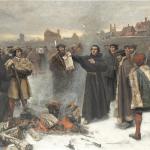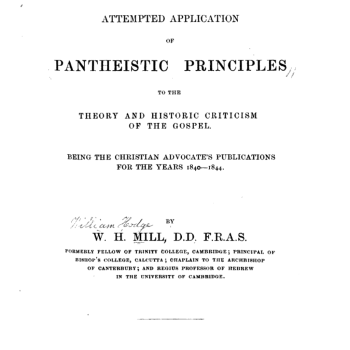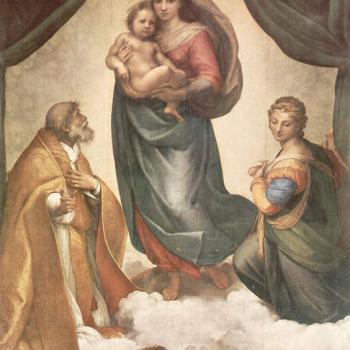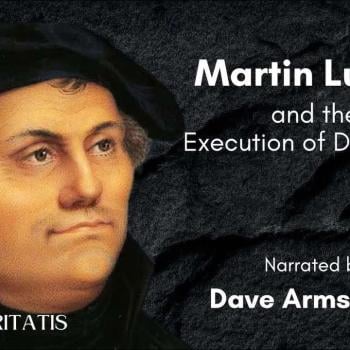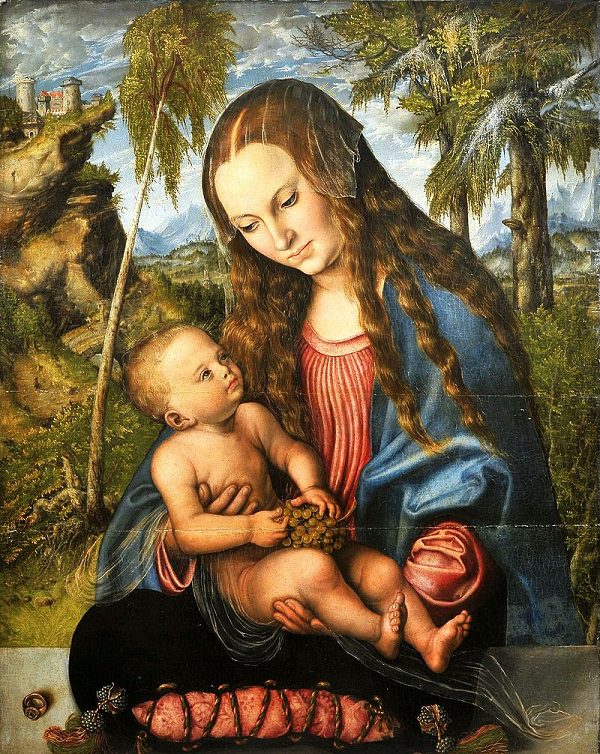
***
“Please Hit ‘Subscribe’”! If you have received a benefit from this or any of my other 4,600+ articles, please follow this blog by signing up (with your email address) on the sidebar to the right (you may have to scroll down a bit), above where there is an icon bar, “Sign Me Up!”: to receive notice when I post a new blog article. This is the equivalent of subscribing to a YouTube channel. Please also consider following me on Twitter / X and purchasing one or more of my 55 books. All of this helps me get more exposure, and (however little!) more income for my full-time apologetics work. Thanks so much and happy reading!
***
Here are two lengthy excerpts from Luther’s writings in which he expresses his agreement — along with virtually all of the early Protestant leaders — with the biblical, traditional, patristic, and Catholic belief in the perpetual virginity of Mary. Greater context for the key statements has been kindly provided by the anti-Catholic polemicist and self-proclaimed expert on Luther, James Swan (thanks much!). None of the bolding is in Luther’s original.
The devil is doing his worst against this article of the divinity and the humanity of Christ, which he finds intolerable. Christ must be true God, in accord with the powerful testimony of Scripture and particularly of St. Paul, who declares that in Him the whole fullness of the Deity dwells bodily (Col. 2:9); otherwise we are damned forever. But in His humanity He must also be a true and natural son of the Virgin Mary, from whom He inherited flesh and blood as any other child does from its mother. He was conceived of the Holy Spirit, who came upon her and overshadowed her with the power of the Most High, according to Luke 1:35. However, Mary, the pure virgin, had to contribute of her seed and of the natural blood that coursed from her heart. From her He derived everything, except sin, that a child naturally and normally receives from its mother. This we must believe if we are not to be lost. If, as the Manichaeans allege, He is not a real and natural man, born of Mary, then He is not of our flesh and blood. Then He has nothing in common with us; then we can derive no comfort from Him. However, we do not let ourselves be troubled by the blasphemies which the devil, through the mouths of his lying servants, speaks against Christ the Lord—now against His divinity, now against His humanity—and by the attacks which he then makes against Christ’s office and work. But we cling to the Scriptures of the prophets and apostles, who spoke as they were moved by the Holy Spirit (2 Peter 1:21). Their testimony about Christ is clear. He is our Brother; we are members of His body, flesh and bone of His flesh and bone. According to His humanity, He, Christ, our Savior, was the real and natural fruit of Mary’s virginal womb (of which Elizabeth, filled with the Holy Spirit, said to her in Luke 1:42: “Blessed is the fruit of your womb!”). This was without the co-operation of a man, and she remained a virgin after that. Everything else that a mother imparts to a child was imparted by Mary, the mother of God’s eternal Son. Even the milk He sucked had no other source than the breasts of this holy and pure mother. (1st Sermon on the Gospel of John, July 1537, in Luther’s Works, vol. 22, 23-24)
Now the question may occupy us how Christ could have brothers, since He was the only Son of Mary, and the Virgin Mary bore no children besides Him. Some say that Joseph had been married before his marriage to Mary, and that the children of this first wife were later called Christ’s brothers. Others say that Joseph had another wife simultaneously with Mary, for it was permissible for the Jews to have two wives. In the Book of Ruth we hear that a poor daughter was often left on the shelf (Ruth 3:10 ff.). This displeased God; therefore He commanded that such daughters be provided for. Thus it became incumbent upon the nearest relative or friend to marry such a poor orphan girl. Mary, too, was a poor little orphan, whom Joseph was obligated to marry. She was so poor that no one else wanted her. Any children born to Joseph by other wives would have been half brothers of Christ. This is the explanation offered by some. But I am inclined to agree with those who declare that “brothers” really means “cousins” here, for Holy Writ and the Jews always call cousins brothers. Be that as it may, it matters little. It neither adds to nor detracts from faith. It is immaterial whether these men were Christ’s cousins or His brothers begotten by Joseph. In any event, they moved to Capernaum with Christ, where they took charge of the parish. We may infer from this text that they were a poor little group. After Joseph’s death they probably found it impossible to support themselves in Nazareth and for this reason left and moved to Capernaum. But just how and why this happened is a moot question. Christ was born in Bethlehem and reared in Nazareth, and now He is residing as a pastor in Capernaum. This town is His parish. He chose it as the place where He was to reside as bishop and as burgher, just as our pastor dwells here and is our bishop. Christ did not remain in Capernaum permanently. No, He wandered about. He returned to Nazareth and journeyed through all of Galilee, preaching and performing miracles; and then He would return to His abode in Capernaum. The other prophets did the same. Samuel lived in Ramah, and from there he “went on a circuit” to preach in the adjacent countryside (1 Sam. 7:16–17). (16th Sermon on the Gospel of John, January 1538, in Luther’s Works, vol. 22, 214-215)
Luther also stated that Mary “was a virgin before and at the birth of Christ” (That Jesus Christ Was Born a Jew, May 1523, in Luther’s Works, vol. 45, 206). This is the miraculous in partu birth of Christ, in which the birth was completely miraculous, and not natural childbirth by the usual physical, biological process. For more on this, see my article, Luther & Mary’s Virginity During Childbirth (The Miraculous Birth of Jesus [“in Partu”] Without Pain) [10-12-11; additions on 9-19-15].
As an extra bonus, here are some remarks by Luther concerning Mary being the Mother of God:
We must hold to this faith in opposition to the heretics. The Turk contends that Mary was not the mother of the Son of God. The Nestorians said that Mary was not the mother of God but only of the man Jesus, who by nature was only her son. They made two sons out of one. But there is only one Son; and yet there are two natures, which gave Mary the right to say: “This Son Jesus, whom I bore and suckled on my breasts, is the eternal God, born of the Father in eternity, and also my Son.” And God says likewise: “Mary’s Son is My only Son.” Thus Mary is the mother of God. And Christ, together with God the Father and the Holy Spirit, is very God from eternity who became man in time. So God the Father does not have a son apart from Mary’s, nor does Mary have a son apart from God the Father’s. This is the foundation on which our faith rests: that Jesus Christ has two natures even though He is one indivisible Person. There are not two sons and two persons; there is one Son and one Person. (27th Sermon on the Gospel of John, in Luther’s Works, vol. 22, 323-324)
***
*
Practical Matters: Perhaps some of my 4,600+ free online articles (the most comprehensive “one-stop” Catholic apologetics site) or fifty-five books have helped you (by God’s grace) to decide to become Catholic or to return to the Church, or better understand some doctrines and why we believe them.
Or you may believe my work is worthy to support for the purpose of apologetics and evangelism in general. If so, please seriously consider a much-needed financial contribution. I’m always in need of more funds: especially monthly support. “The laborer is worthy of his wages” (1 Tim 5:18, NKJV). 1 December 2021 was my 20th anniversary as a full-time Catholic apologist, and February 2022 marked the 25th anniversary of my blog.
PayPal donations are the easiest: just send to my email address: [email protected]. Here’s also a second page to get to PayPal. You’ll see the term “Catholic Used Book Service”, which is my old side-business. To learn about the different methods of contributing (including Zelle), see my page: About Catholic Apologist Dave Armstrong / Donation Information. Thanks a million from the bottom of my heart!
*
***
*
Photo credit: Lucas Cranach the Elder, Madonna under the fir tree (1509) [pubic domain / Wikimedia Commons]
Summary: Martin Luther believed in the biblical, patristic, and Catholic doctrine of Mary’s perpetual virginity, including during Jesus’ miraculous birth (i.e., an intact hymen).


